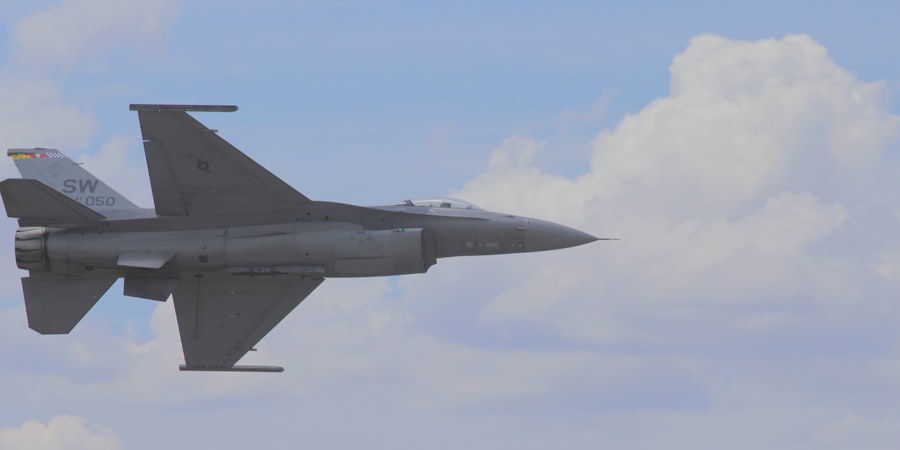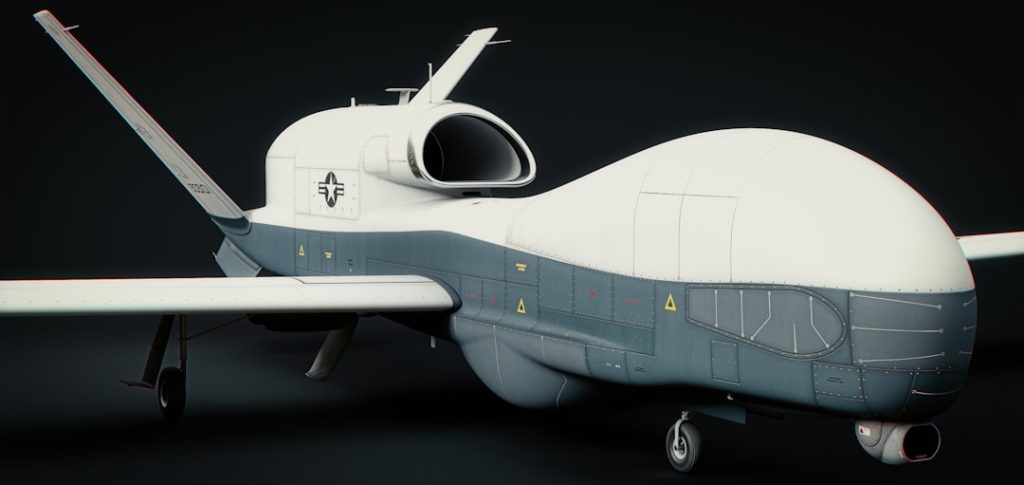Lockheed Martin Aeronautics Company, a division of Lockheed Martin Corporation, has a storied history that dates back to the early 20th century. The roots of the company can be traced to the founding of the Lockheed Aircraft Company in 1912 by Allan Lockheed, who initially focused on building seaplanes. The company gained prominence during World War I, producing aircraft that were crucial for military operations.
In 1926, Lockheed introduced the Vega, a revolutionary aircraft that showcased advanced design and engineering, setting the stage for future innovations. The merger of Lockheed with Martin Marietta in 1995 marked a significant turning point in the company’s trajectory. This union combined two aerospace giants, allowing for a broader range of capabilities and resources.
The newly formed Lockheed Martin Aeronautics Co. quickly became a leader in military aviation, developing iconic aircraft such as the F-16 Fighting Falcon and the F-22 Raptor. The company’s commitment to innovation and excellence has enabled it to maintain a competitive edge in the aerospace sector, adapting to changing technologies and military needs over the decades.
Key Takeaways
- Lockheed Martin Aeronautics has a rich history of innovation in aerospace engineering.
- The company leads in cutting-edge aerospace technology advancements.
- Strong collaborations and partnerships enhance its industry influence.
- A firm commitment to sustainability guides its operations and projects.
- Lockheed Martin plays a critical role in national security through its aerospace solutions.
Advancements in Aerospace Technology
Lockheed Martin Aeronautics Co. has been at the forefront of aerospace technology advancements, consistently pushing the boundaries of what is possible in aviation. One of the most notable achievements is the development of stealth technology, which has revolutionized military aircraft design.
The F-117 Nighthawk, introduced in the 1980s, was the first operational aircraft designed around stealth principles, allowing it to evade radar detection and conduct precision strikes with unprecedented effectiveness. This innovation not only changed the landscape of aerial combat but also set a new standard for future aircraft designs. In addition to stealth capabilities, Lockheed Martin has made significant strides in integrating advanced avionics and automation into its aircraft.
The F-35 Lightning II, for instance, features cutting-edge sensor fusion technology that provides pilots with a comprehensive view of the battlefield. This capability enhances situational awareness and decision-making, allowing for more effective mission execution. Furthermore, the incorporation of artificial intelligence and machine learning into flight systems is paving the way for autonomous operations, which could redefine how military missions are conducted in the future.
Collaborations and Partnerships

Lockheed Martin Aeronautics Co. recognizes that collaboration is essential for driving innovation and achieving ambitious goals in aerospace technology. The company has established numerous partnerships with government agencies, academic institutions, and other industry leaders to foster research and development initiatives.
For example, its collaboration with NASA on various projects has led to significant advancements in aeronautics research, including developments in supersonic flight and sustainable aviation technologies. Moreover, Lockheed Martin actively engages with international partners to enhance global security and defense capabilities. Joint ventures with countries such as Australia and Japan have resulted in collaborative projects like the F-35 program, where multiple nations share resources and expertise to develop advanced fighter jets.
These partnerships not only strengthen military alliances but also promote interoperability among allied forces, ensuring that they can work together effectively in joint operations.
Commitment to Sustainability
| Metric | Description | 2022 | 2023 | Target 2025 |
|---|---|---|---|---|
| Carbon Emissions (tons CO2e) | Total greenhouse gas emissions | 15,000 | 13,500 | 8,000 |
| Renewable Energy Usage (%) | Percentage of total energy from renewable sources | 40% | 50% | 75% |
| Water Usage (million liters) | Total water consumed in operations | 120 | 110 | 80 |
| Waste Recycled (%) | Percentage of waste recycled or reused | 60% | 65% | 85% |
| Supplier Sustainability Compliance (%) | Suppliers meeting sustainability standards | 70% | 75% | 90% |
| Employee Sustainability Training (%) | Employees trained on sustainability practices | 55% | 70% | 90% |
In recent years, Lockheed Martin Aeronautics Co. has made a concerted effort to address environmental concerns and promote sustainability within its operations. The company recognizes that the aerospace industry has a significant impact on global carbon emissions and is committed to reducing its environmental footprint.
Initiatives such as developing more fuel-efficient aircraft and exploring alternative energy sources are central to this commitment. For instance, Lockheed Martin is investing in research on hybrid-electric propulsion systems that could dramatically reduce emissions from future aircraft. Additionally, Lockheed Martin has implemented sustainable practices within its manufacturing processes.
The company has adopted advanced materials and production techniques that minimize waste and energy consumption. By focusing on sustainability, Lockheed Martin not only meets regulatory requirements but also positions itself as a responsible leader in the aerospace industry, appealing to environmentally conscious consumers and stakeholders.
Impact on National Security
Lockheed Martin Aeronautics Co. plays a pivotal role in enhancing national security through its advanced military aircraft and systems. The company’s products are integral to the defense strategies of the United States and its allies, providing air superiority and advanced capabilities in various combat scenarios.
The F-22 Raptor, for example, is widely regarded as one of the most advanced air dominance fighters in existence, equipped with superior speed, agility, and stealth features that ensure it remains unmatched in aerial combat. Moreover, Lockheed Martin’s contributions extend beyond traditional military applications; they also encompass intelligence, surveillance, and reconnaissance (ISR) capabilities that are crucial for modern warfare. The company’s P-3 Orion maritime patrol aircraft has been instrumental in anti-submarine warfare and maritime security operations for decades.
As threats evolve, Lockheed Martin continues to adapt its technologies to meet emerging challenges, ensuring that national defense remains robust and responsive.
Future Projects and Developments

Looking ahead, Lockheed Martin Aeronautics Co. is poised to embark on several ambitious projects that promise to shape the future of aviation and defense. One of the most anticipated developments is the Next Generation Air Dominance (NGAD) program, which aims to create a family of systems that will ensure air superiority for decades to come.
This initiative focuses on integrating manned and unmanned platforms with advanced sensors and weapons systems to create a comprehensive air combat network. Additionally, Lockheed Martin is exploring hypersonic technology as part of its future projects. Hypersonic vehicles can travel at speeds exceeding Mach 5, offering unprecedented capabilities for both military applications and commercial aviation.
The company’s investments in this area reflect its commitment to maintaining technological superiority and addressing future threats effectively.
Workforce and Talent Development
Lockheed Martin Aeronautics Co. understands that its success hinges on attracting and retaining top talent in a highly competitive industry. The company invests heavily in workforce development programs aimed at fostering skills and knowledge among its employees.
Initiatives such as internships, co-op programs, and partnerships with universities provide students with hands-on experience in aerospace engineering and related fields, creating a pipeline of skilled professionals ready to contribute to the industry. Moreover, Lockheed Martin emphasizes continuous learning and professional development for its existing workforce. Employees are encouraged to pursue further education and training opportunities through various programs offered by the company.
This commitment to talent development not only enhances employee satisfaction but also ensures that Lockheed Martin remains at the cutting edge of technological advancements in aerospace.
Awards and Recognition
Lockheed Martin Aeronautics Co.’s dedication to excellence has not gone unnoticed within the industry; the company has received numerous awards and accolades over the years. Recognized for its innovative designs and engineering prowess, Lockheed Martin has been honored with prestigious awards such as the Collier Trophy for outstanding achievements in aeronautics. This award highlights the company’s contributions to advancing aviation technology and improving safety standards.
In addition to industry awards, Lockheed Martin is frequently acknowledged for its commitment to corporate social responsibility and sustainability initiatives. The company has been recognized by various organizations for its efforts to promote diversity and inclusion within its workforce as well as its environmental stewardship practices. These accolades reflect Lockheed Martin’s holistic approach to business—one that values not only technological advancement but also social responsibility and ethical practices within the aerospace sector.




